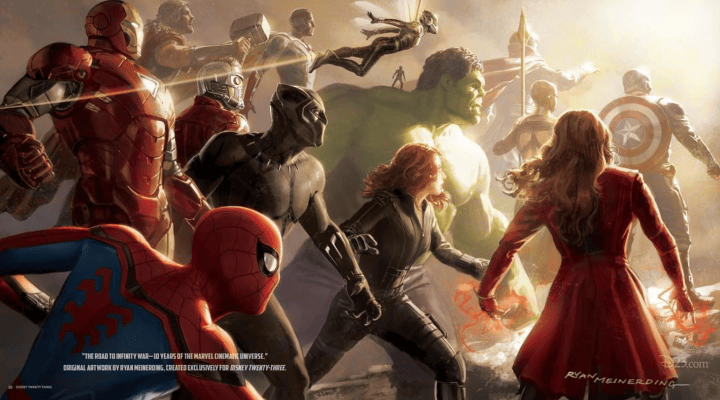Comic books have been a staple of popular culture for decades, and in recent years, they have found a new medium for reaching audiences: film. The adaptation of comics to film has become a booming industry, with many successful films based on popular comic book series. However, not all adaptations are created equal, and the process of adapting comics to film can be a tricky one. In this article, we will take a closer look at the art of adapting comics to film, and examine some of the most successful comic book adaptations in recent years.
The Challenge of Adaptation: Translating Comics to Film

One of the biggest challenges of adapting comics to film is translating the unique visual and narrative elements of comics to the screen. Comics rely heavily on imagery, dialogue, and panel layouts to tell their stories, and these elements can be difficult to replicate in a film. Additionally, comics often feature fantastical elements and larger-than-life characters that can be difficult to translate to a live-action film.
One of the most challenging aspects of adapting comics to film is the process of condensing a story that may have been told over several issues or even decades into a 2-hour film. This often requires the filmmakers to make difficult decisions about what elements of the story to keep and which to leave out. This process can be particularly challenging when adapting comics that have a large and dedicated fanbase, as fans often have a strong emotional investment in the characters and stories, and they expect to see a faithful adaptation on the big screen.
The process of adapting comics to film also requires a deep understanding of the source material, as well as the ability to recognize what elements of the comics will translate well to the screen and what elements will not. This includes understanding the characters, their motivations, and the themes of the comics. It also includes understanding the visual language of comics, such as panel layouts and the use of imagery.

One way to overcome these challenges is to involve comic book creators in the adaptation process. For example, when adapting the comic book series “Sin City” to film, director Robert Rodriguez worked closely with creator Frank Miller to ensure that the film stayed true to the source material. This approach has been successful in many comic book adaptations, as it allows the filmmakers to tap into the creators’ understanding and passion for the comics, while also giving them the creative freedom to adapt the comics to the big screen.
The Importance of Staying True to the Source Material
Another important aspect of adapting comics to film is staying true to the source material. Fans of comic book series often have a strong emotional investment in the characters and stories, and they expect to see a faithful adaptation on the big screen. Deviating too far from the source material can lead to disappointment and backlash from fans.

One of the most successful examples of staying true to the source material is the Marvel Cinematic Universe. Marvel Studios, under the leadership of Kevin Feige, has been able to adapt a wide range of Marvel Comics characters to the big screen while staying true to the spirit of the original comics. This has led to a successful and cohesive cinematic universe that has resonated with both fans and general audiences.
Another example of staying true to the source material is the adaptation of the graphic novel “V for Vendetta” directed by James McTeigue. The film stays true to the themes and messages of the original graphic novel, while also making necessary changes to adapt the story to the big screen. The filmmakers also kept key elements of the graphic novel such as the iconic Guy Fawkes mask worn by the main character and the use of symbolism throughout the film. This approach helped to keep fans of the graphic novel engaged and satisfied with the adaptation.

File: Deadpool_(2016_poster).png
Staying true to the source material also extends to the casting of characters. Fans often have a strong emotional attachment to the characters and the actors that portray them, and it’s important to cast actors that can accurately bring the characters to life. An example of this is the casting of Ryan Reynolds as Deadpool in the 2016 film. Reynolds had previously played the character in a film, but it was not well received by fans. However, when Reynolds was given the opportunity to reprise the role in a standalone film that stayed true to the comics, fans were thrilled and the film was a huge success.
The Role of the Filmmaker
The role of the filmmaker in adapting comics to film is crucial. A filmmaker must have a deep understanding of the source material and an appreciation for the unique elements of comics. They must also have the creativity and vision to adapt the story and characters to the screen while staying true to the spirit of the original comics.

File: Deadpool_(2016_poster).png
One example of a filmmaker who has been successful in this regard is Christopher Nolan, who directed “The Dark Knight” trilogy based on the Batman comics. Nolan had a deep understanding of the character and the source material and was able to bring a fresh and grounded perspective to the character while staying true to the spirit of the comics. This led to a critically acclaimed and financially successful film series that has had a lasting impact on the superhero genre.
Another example is director Taika Waititi, who directed the Marvel film “Thor: Ragnarok”. Waititi brought his unique comedic style and vision to the film, while also staying true to the characters and elements of the comics. The result was a critically acclaimed and financially successful film that was a departure from previous Thor films and a fresh take on the character.
The Art of World Building
An important aspect of adapting comics to film is the art of world-building. Many comics have a rich and detailed world that is an integral part of the story. It’s important for filmmakers to be able to bring that world to life on the big screen in a way that is visually stunning and immersive for the audience.

One example of successful world-building is the Harry Potter film series. The filmmakers were able to bring the magical world of Hogwarts and the wizarding world to life in a way that was true to the source material and immersive for the audience. The use of practical effects and stunning visuals helped to create a believable and detailed world that enhanced the story and made the audience feel like they were a part of the world.
Another example is the adaptation of “The Lord of the Rings” trilogy directed by Peter Jackson. The filmmakers were able to bring the world of Middle Earth to life in a way that was true to the source material and immersive for the audience. The use of stunning landscapes, practical effects and CGI helped to create a believable and detailed world that enhanced the story and made the audience feel like they were a part of the world.
Conclusion
Adapting comics to film is a challenging and complex process that requires a deep understanding of the source material, an appreciation for the unique elements of comics, and a creative vision for translating those elements to the screen. When done correctly, the result can be a truly successful and enjoyable film that resonates with both fans and general audiences. Filmmakers such as Christopher Nolan, Kevin Feige, and Taika Waititi have shown that it is possible to adapt comics to film while staying true to the source material, and creating a successful film. The key is to stay true to the source material, respect the comics and the fans that love them, and let the filmmakers do what they do best, make a great film. Additionally, the art of world building and understanding the importance of staying true to the source material are crucial in the process of adapting comics to film. With each new adaptation, comics continue to have a strong impact on pop culture and continue to shape the film industry in ways that are both entertaining and thought-provoking.







